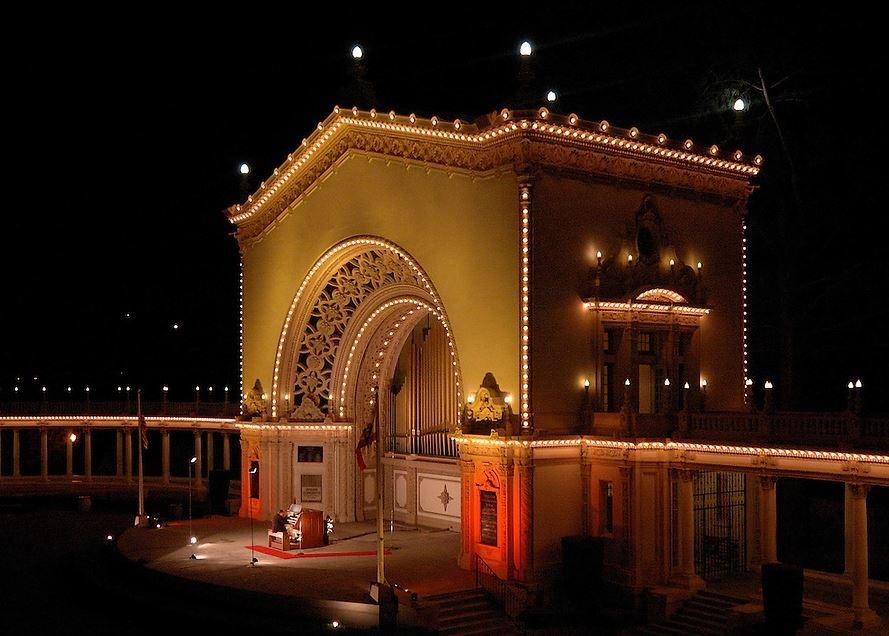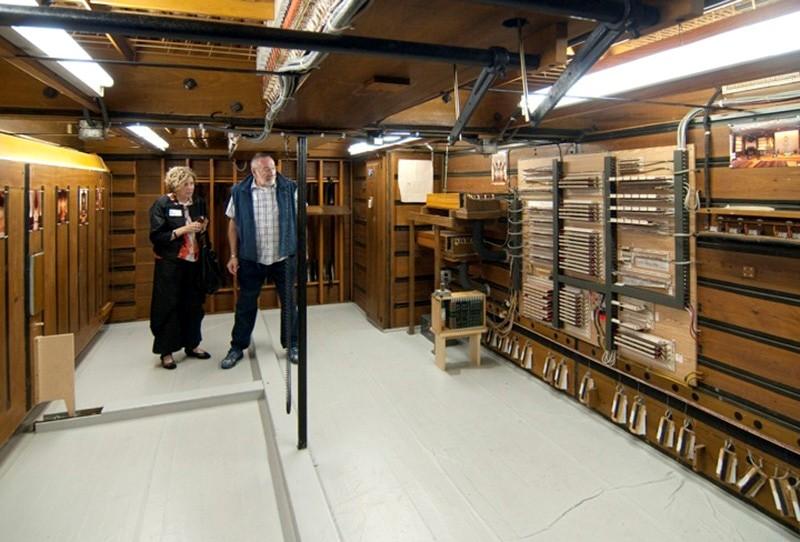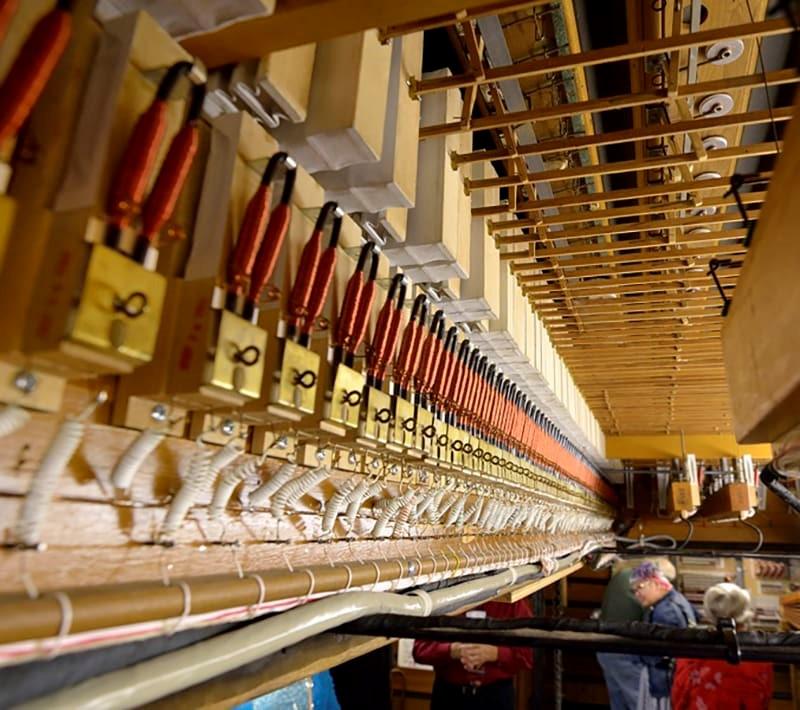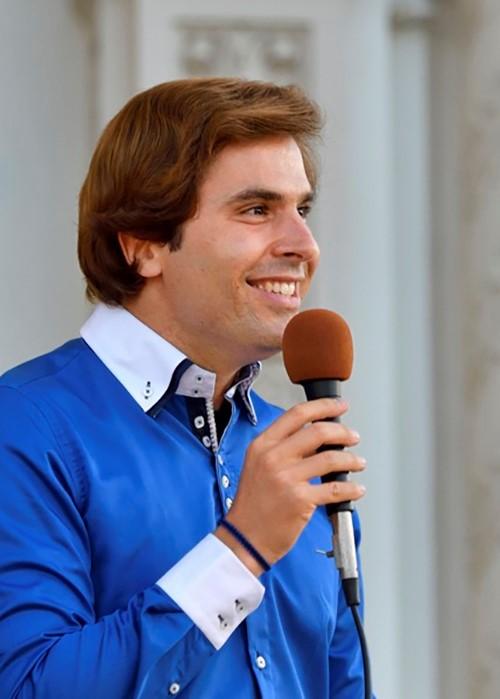SOS-0002 August 2022 – Part 2 – The Austin Organ / Spreckels Organ Pavilion / Curators / Civic Organists
August 2022 – Part 2 – The Austin Organ / Spreckels Organ Pavilion / Curators / Civic Organists
COPPER MAGAZINE / Frank Doris / Issues 154 and 155
Earlier this year, our own Gordon Stanley, Vice President for Spreckels Organ Society , had an opportunity to sit down with Frank Doris , Editor of Copper Magazine , to discuss the Spreckels Organ. The following text is taken directly from Mr. Doris's two-part January 2022 Copper Magazine series: The Spreckels Organ : A Historic Musical Treasure .

“Frank Doris: How are the keyboards, stops, foot pedals and so on arranged?
Gordon Stanley: Each pipe plays one note, like a key on a piano. Each group of pipes forms a rank. [The ranks play a similar role as] an instrument in an orchestra. Each rank is typically brought into play by turning on a “stop.” (It really could more accurately be called a “start”! Did you ever hear the term for a grand effort as “pulling out all the stops?” Yes, this is where it originates.) These ranks are grouped together similar to groupings in an orchestra like the percussion, woodwinds, brass, and so on. These are called divisions. Each division is typically controlled by one keyboard or pedal board. And to make it extra interesting, there are links called couplers that allow connecting the keyboards together, so for instance, you could have a group of ranks in the Great division, typically the loudest grouping,
To complicate it further, these divisions can be coupled at higher and lower octaves, allowing for nearly unlimited tonal possibilities. Normally, the lowest notes are controlled by the [foot-operated] pedal board. Finally, to add extra interest and complexity, the Spreckels Organhas a “toy counter” that is a group of percussive and special effects instruments like cymbals, gongs, bass drums, snare drums and more. These sounds are assigned to buttons at the keyboard and pedalboard depending on the sound and its likely use. All of these sounds are controlled by 528 thin wires, like telephone wires, encased in a robustly-insulated cable wrapped with fire hose for protection. Through a set of stops that control which ranks are on and which keyboard they are assigned to, the organist is able to control all 5,098 pipes.
FD: According to Wikipedia , the organ has 80 ranks and 5,017 pipes. Could you explain what that means?
GS: Today the count is actually 81 ranks and 5,098 pipes with the addition of a new rank called the “Majestic Flute,” a gift from benefactor Dorothea Laub in 2020. Each pipe plays one note per one instrument or rank. In some cases, there are two or more pipes blended together to create more volume, a vibrato effect, or harmonic richness for one note. Typically, each manual rank covers five or six octaves, or 61 or 73 notes. The pedal board typically covers just over two and a half octaves or 32 notes. Most symphonic instruments don't cover more than two to three octaves, the exception being the piano, which covers 10 octaves. Noteworthy is the fact that in addition to playing its own often-thunderous ranks, the pedal board can also, via couplers, play the first 44 notes of all four manuals.
As an aside, the Spreckels Organ's title as the World's Largest Outdoor Musical Instrument was threatened back in the late 1990s by the Heroes' Organ of Kufstein, Austria. We weren't about to lose our status as the largest outdoor pipe organ in the world, so the citizens of the San Diego region stepped up with generous contributions in the "Drive to 5000" (pipes) headed up by George Hardy, a past president of the Society, and we retook the title.
FD: How are the pipes powered?
GS: It's all about the wind. There is absolutely no electronic amplification to any of the organ sounds. Simple electronics are only used to control the electromagnets that trigger the air pneumatics that open the valves to play the pipes, and for the console stops' preset memory system. Standard public address systems are used to amplify other accompanying musicians playing duets with the organ, when using instruments such as violin, viola, cello, trumpet, flugelhorn, harp and so on. Great care is taken to isolate the microphone amplification of the [other] instruments from the organ's powerful sound.
The pipes are powered primarily by one large blower motor of 25 horsepower in the pavilion basement. Its turbine fans suck in massive amounts of air (up to 5,000 cubic feet per minute) and pressurize it to 10 H2O and 15 H2O column inches of water pressure, measured by water column [gauges]. This is about three times higher than [what's required for] a typical organ inside a building. These pressures are required because the organ plays into the open air and the closest reflective surfaces are the stage, buildings over 300 yards away, and the low evening clouds we call the marine layer. There is [also] a one-horsepower special high-pressure blower developing 30 inches of pressure for the Centennial Tuba rank, added for the 100 th anniversary of the organ in 2015. The movement of air would be enough to completely replace all the air in a typical home in less than two minutes.
The immense wind volumes and pressures are sent through a series of steel tubes called wind conductors, into wind chests. The two large main windchests each have a spring-loaded moving wall which functions as an air pressure regulator/bellows to keep the pressure stabilized according to the varying wind volume demands and the number and size of the pipes playing at any given moment. The moving walls are linked to air valves in the wind conductors to open and close as necessary to maintain the 10 and 15 2O pressures. The two large windchests in the Spreckels Organ are large enough that the curator can walk inside via a series of airlock doors to make adjustments while the organ is playing. Inside each windchest are the complex multi-stage valves invented by the Austin Organ company, which allow extremely responsive opening and closing of air valves for each pipe. These valves are so responsive, it is easy for an organist to play 64 th notes.
 The windchest inside the Spreckels Organ
The windchest inside the Spreckels Organ
FD: Are there any electronics involved in producing any of the sounds? How is the instrument controlled?
GS: Electricity is used in this manner: When the organist powers up the organ, he pushes a start button that powers up the main 25-horsepower blower, which draws about 42 amps at 208 volts, using three-phase power.
An automatic air pressure switch powers up the organ's playing action transformer/rectifier, which converts 208 volts, single-phase into a nominal 14 volts DC. The organ is ready to play within five seconds.
Next, if the organ is to be used for a public performance and not just for “behind the door practice,” the organ curator hits another motor switch and a 3/4-horsepower motor with a large group of gears, much like a garage door opener, begins the five-minute process of opening a steel curtain that weighs about 10,000 pounds and protects the pipes when not in use.
Once the organ is pressurized and ready to play, the organist moves electric switches above the keyboards, which connect the ranks of pipes to the keyboards. Finally, each time the organist touches a key, a small electric current travels down one of the 528 telephone-sized wires, gets routed through the relay, which electrically activates a two-stage air valve and lets the wind pressure into the associated pipe( s), and [then] the pipe begins oscillating [and producing] its sound. This action, termed “electro-pneumatic,” is very quick, responding up to many times a second from any key on the four keyboards or the pedal board. All in all, there could be over 300 keys that could be pressed at any second and respond at the talented touch of the organist.


The electro-pneumatic relay system controls the stops and routes air to the appropriate pipes as the organ console keys are pressed.
By the way, if you calculated the raw power of the organ, it would be about 50 horsepower, or 746 watts per horsepower, or 37,300 watts, or in BTUs at 2,545 per horsepower or 127,250. That would easily heat eight to 10 San Diego homes. If you converted this to sound at the typical 10 percent efficiency of a high-end stereo system, you would need about 375,000 watts of amplifiers. So, when you hear the organist joke about tickling the toes of the elephants in the San Diego Zoo, over a mile away, you know it could really happen.
FD: Are there any other interesting statistics about the organ?
GS: The Spreckels Organ abounds with interesting statistics. We have already mentioned a few, but here are some more that may be of interest:
When the organ is unused, it is protected by a steel door similar to a very large rolltop desk. This steel door, which we refer to as the curtain, weighs about 10,000 pounds and takes five minutes to raise and lower. It has protected the organ for 106 years from thunderstorms, ash from wildfires, graffiti, hailstorms, and vagrants trying to get access. It does such a good job that often people sitting in the pavilion relaxing are heard to say, “what's in that building?” and then react in surprise to learn that the building is home to the world's largest outdoor organ.
The Sunday 2:00 pm concert tradition has been ongoing for 107 years since the organ's dedication. The rare exceptions or cancellations have been a thunderstorm with horizontal rain; ash from the Pines Fire in 2002; World War II, which caused a halt so the stage could be used for training the troops; and for six weeks while a ship's engineering firm in Washington State rewound the armatures of the blower's large motor. The COVID pandemic threatened the schedule, so instead [of having live shows], a small cadre of eight volunteers went quietly to the park on Wednesday and Thursday evenings and recorded concerts, which the civic organist, Raúl Prieto Ramírez, edited so they could be premiered on YouTube every Sunday for 72 weeks, until the CDC and the city allowed us to resume carefully managed, live concerts.

Organist Raúl Prieto Ramírez entertains the Sunday afternoon crowd.
Similar to a church structure being part of the organ, our pavilion is the organ. The organ's structure does not consist of just the pipes. A complex architecture holds the pipes in position, includes a series of windchests, and there is very careful structuring, insulating and shaping of the interior spaces, with parabolic shapes to both blend and focus the sound before sending it out to an audience of up to 2,500 seated and 5,000 standing. All in all, the organ and the 70-by 70-by 20-foot building would weigh about 500,000 pounds.
The pavilion has a green room [where] artists dress and prepare, a hallway museum for visitors [that features] photos and honors donors [spanning more than] 100 years, and a small apartment, which was [originally] planned for the curator. During normal times, visitors to the organ are invited to come inside to see the inner workings, including the largest pipe, which is 32 feet long, and about 16 inches in diameter. They can also go inside the airlock into the windchest which is about 7 by 10 by 20 feet. You can actually be in the windchest and watch the organ being played, though it is louder outside the windchest, ironically.
The
Spreckels Organ Society , in conjunction with the City of San Diego, operates the organ on a frugal budget, which provides concerts free of charge to over 100,000 people at live events and that many again on social media. The cost is less than $5 per attendee, in comparison to the cost to operate a modern symphony which can exceed $100 per attendee.

During popular events like rock concerts and silent movie nights, the Pavilion fills to overflowing capacity.
In addition to the organ, since the stage is central to Balboa Park, one of the world's great city parks, it is used for a series of summer concerts, and it is regularly booked during non-concert times for weddings and other celebrations. The beautiful colonnade that surrounds the pavilion is the background for countless wedding and quinceañera photo shoots.
The organ is made of tin, lead, wood, leather, miles of copper wire, iron magnets, and 100-year-old ivory, which has been preserved on the keyboards through four prior consoles. Besides tuning and occasionally rewinding the blower motor cores, the big areas requiring loving maintenance are: sticking console keys, adjustments to the stops, and re-leathering the bellows and relays about every 3 to 4 decades. This re-leathering process is of particular concern because modern materials have not been developed to replace leather, and modern tanning processes leave leather much weaker than the natural methods used previously.
FD: Tell us about Lyle Blackinton, the person who was the curator of the Spreckels Organ for around 50 years, and his successor.
Lyle Blackinton is the curator emeritus for the Spreckels Organ and the former president of Lyle Blackinton and Associates. He first heard the Spreckels Organ in 1948 when he was 11 years old and began working for then-curator Leonard Dowling in 1954, while still in high school. In 1970, Dowling took Blackinton in as a partner and they incorporated the business. Lyle is not a musician but [is] a true artisan at organ building, with a portfolio of very well-known electropneumatic organs around the country. Exceptional examples include organs at First United Methodist Church of San Diego CA, Bethel University in Saint Paul, Minnesota, the La Jolla Presbyterian Church in La Jolla CA, and the University of San Diego. Additionally, his company di lui was responsible for significant expansion, reconditioning, and revoicing of the Spreckels Organ in 1986, 1993,
Lyle brought Dale Sorenson on board in the company to keep up with organ maintenance and new installation contracts throughout Southern California. Dale is a regular organist at a Lutheran church in Chula Vista, and over time, has assumed more and more of the curator duties, as Lyle became less active in the daily operations of his company while continuing his role as a trustee in the Spreckels Organ Society. When the baton was passed, Lyle became curator emeritus and Dale took over the full-time role as curator.
There have only been five curators in the 107-year history of the organ.”
Frank Doris: The Spreckels Organ Society website has posted free concerts for a very long time, and continues to have them. Can you tell us a little about this, and who some of the memorable artists are?
GS: There have been eight civic organizations who all held national reputations in their own right:
Humphrey John Stewart , 1914 – 1932
Royal Albert Brown, 1932 – 1954
Specialist First Class D. Robert Smith, World War II
Charles Rollins Shatto, 1954 – 1957
Douglas Ian Duncan, 1957 – 1978
Jared Jacobsen, 1978 – 1984
Robert Plimpton, 1984 – 2001
Carol Williams , 2001 – 2016
Raúl Prieto Ramírez , 2018 – present
In addition to the regular concerts, the Society features 8 to 12 artists each year of national and international renown, who perform special Monday evening concerts at the Spreckels International Organ Festival. This list would include over 300 of the world's most recognized organist.
FD: What is involved in the maintenance of the organ and the facility?
GS: The organ is almost like a living being in terms of its care. It needs to be tuned weekly, which is a labor-intensive process of climbing among the pipes and making fine adjustments to the tuning collars and reeds. Because of the complexity of [the] moving parts, there is almost always something requiring attention. Think about this: a grand piano with 88 notes has about 10,000 parts, 95 percent of them moving. An organ on the grand scale of the Spreckels has an incalculable number of parts to be adjusted, lubricated, unstuck, etc. The work of the curator never finishes. Just when everything is balanced and tuned, the San Diego seasons change along with the prevailing temperatures and humidity and it all begins again.”
. . . . .
Acknowledgments: Special thanks to Jean Samuels, 2019-2021 Society president; Dale Sorenson, curator; Mitch Beauchamp, trustee; and Robert E. Lange, photographer, who were instrumental in making this article and interview happen.
Continued in part 3.

